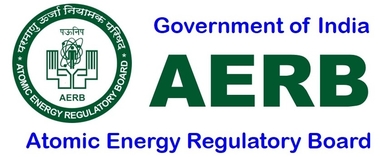Myths & facts about radiation
Myth: There is no safe dose of radiation.
Fact:We are continuously exposed to different forms of radiation every day, including when we breathe air or eat food. Small amounts of radiation in medication, electricity generation and many other applications has extended and saved many lives. According to studies done by the United Nations Scientific Committee, the risk associated with low-dose radiation from natural and man-made sources is extremely small.
Myth: There is no safe dose of radiation.
Fact:Myth: Radiation from nuclear plants makes you sick and causes cancer.
Fact:Nuclear power plants emit extremely small amounts of radiation and pose no threat to the public or the environment. After more than 50 years of radiological monitoring and medical research, there has been no evidence suggesting that radiation from nuclear plants has negative health effects on the public.
The Nuclear-Isn't-Natural Myth
TA subtle but significant misconception is that solar energy is not nuclear energy. The reality is quite different. All stars, including our Sun, produce their energy from fusing the nuclei of smaller atoms together to make the nuclei of larger atoms. Our Sun is a middle-aged star, so nearly all of the energy produced comes from the fusing of Hydrogen nuclei together and making Helium nuclei. Some Helium-Hydrogen fusion occurs, as well as Helium-Helium fusion, but both are but a very tiny fraction of the total fusions in our Sun.
When fusion occurs, a minute fraction of the atomic masses of the two nuclei being fused is annihilated into pure energy, as demonstrated by Einstein’s famous formula E=MC². It actually takes some thousands of years for this energy to migrate out from the core of our sun to the surface and be released into space. More than 99% of the released energy from the Sun is a weak form of gamma radiation, or what we more commonly call sunlight. This makes all sunlight nothing less than nuclear by-product material. Solar energy is actually nuclear by-product energy.
Wind energy is formed by the uneven heating of our atmosphere by solar radiation. Thus, wind energy may be correctly understood to be an indirect result of solar nuclear by-product material. In fact, all weather on our planet owes it’s existence to solar nuclear by-product material. Even fossil fuels can be understood as solar nuclear by-product material which has been stored for millions of years in decay-transformed plant chemistry (coal and oil). Literally, all forms of energy we have at our disposal are the result of the energy made in the natural nuclear reactions of our Sun.
One other common misunderstanding concerns the existence of radioactive elements we find everywhere in our world, breathe into our bodies with every breath, and eat in our foods with every meal. Stars do not only make gamma radiation, but also a number of radioactive elements releasing two other types of radiation. In total, there are no less than 29 naturally-occurring radioactive elements, containing more than 40 radioactive isotopes, to be found in our world. Most of these radioactive elements come from ancient super-novae and have been spread throughout our galaxy, including Uranium, Thorium, Radium, Bismuth, Polonium, Protactinium, Radon, Lead and Plutonium. In theory, all of these radioactive heavy elements were originally Uranium isotope 238 (U-238) spawned by the ancient supernovae. U-238 is radioactive and its decay chains, over billions of years, have produced the rest of these very heavy elements.
Naturally occurring Plutonium has an interesting place in all of this. The incomprehensible force produced by supernovae releases a high concentration of free neutrons as well. About half of the freshly made U-238 in a supernova absorbs some of these neutrons and through two relatively rapid radioactive (Beta) decays becomes Plutonium isotope 239 (Pu-239). Plutonium has a relatively short radioactive half-life (compared to the age of a star) of 24,000 years. After no more than 10 half lives after it has been produced, a radioactive material has literally decayed itself into oblivion. It’s gone. All the primordial Pu-239 that was originally part of our planet was gone after about 250,000 years.
As it turns out, Pu-239 decays to U-235, with a 700 million year half life. 4.5 billion years ago, there was about 60 times more U-235 than we have today The initial U-235 has decayed for a little less than 7 half lives, leaving but a small fraction of the original concentration. This is why we have a tiny fraction of all existing Uranium in the isotopic form of U-235, with no remaining Plutonium. Plutonium has too short of a half-life to be around anymore, and the natural radioactive decay of its "daughter" isotope, U-235, has contributed to all the current levels of the rest of above-listed naturally occurring radioactive isotopes we find today. They all literally owe their existence to primordial Plutonium. Because supernovae happen regularly, throughout our roughly 200-billion-galaxy universe, Plutonium can now be understood as a naturally occurring element in our universe, contrary to traditional belief.
But the heavy, Uranium-spawned elements we find in our environment are not the only naturally-occurring radioactive elements we encounter. One of the most common is an isotope of Potassium, a necessary mineral for human life and health. To be specific, Potassium isotope 40 (K-40), which is generated from collisions between cosmic rays and some of the molecules found in our upper atmosphere. This isotope comprises but one tenth of one percent of all the Potassium on our planet. Because of it’s long half-life (1.3 billion years) K-40 has not decayed into oblivion, and won't for about another 9 billion years. Further due to its relatively high abundance in the soils of our planet, Potassium is literally found everywhere. K-40 is uniformly mixed in with the non-radioactive isotopes K-39 (which comprises 93%) and K-41 (at a bit less than 7% abundance). Mother Nature does not segregate them from each other. So, when we eat a potassium-rich food, such as bananas or broccoli, we are ingesting enough K-40 to potentially set off the ultra-sensitive radiation monitors in most nuclear power facilities. Two bananas will definitely do it. (It happened to me) Potassium is also found in milk, all dairy products, and just about every form of fresh green produce found in the grocery market. Ubiquitous and invisible, yes. Also, unavoidable.
One other commonly ingested naturally radioactive element is Tritium (Hydrogen isotope 3; H-3), found in trace amounts in all surface waters and almost all drinking waters. Once again, Mother Nature does not discriminate between the radioactive and non-radioactive water molecules on our planet. We drink tiny quantities of H-3 in every glass of water we consume. Add to this the small concentrations of radioactive radon gas mixed uniformly into the air that we breathe, and we reach one inescapable truth; everywhere we go, everything we do, and everyone we know (including ourselves) is naturally radioactive.
Radioactive Wastes - Myths and Realities
- There are a number of pervasive myths regarding both radiation and radioactive wastes.
- Some lead to regulation and actions which are counterproductive to human health and safety.
Over the years, many views and concerns have been expressed in the media, by the public and other interested groups in relation to the nuclear industry and in particular its waste. Questions have been raised about whether nuclear power should continue when the issue of how to deal with its waste has apparently not yet been resolved.
Some views and concerns include:
Many people quite reasonably feel that the nuclear industry shouldn't continue operation without having a solution for the disposal of its radioactive waste. However, the industry has in fact developed the necessary technologies and implemented most of them - the remaining issue is to ensure that the proposed solutions are acceptable to the public.
Today, safe management practices are implemented or planned for all categories of radioactive waste. Low-level waste (LLW) and most intermediate-level waste (ILW), which make up most of the volume of waste produced (97%), are being disposed of securely in near-surface repositories in many countries so as to cause no harm or risk in the long-term. This practice has been carried out for many years in many countries as a matter of routine.
High-level waste (HLW) is currently safely contained and managed in interim storage facilities. The amount of HLW produced (including used fuel when this is considered a waste) is in fact small in relation to other industry sectors. HLW is currently increasing by about 12,000 tonnes worldwide every year, which is the equivalent of a two-storey structure built on a basketball court or about 100 double-decker buses and is modest compared with other industrial wastes. The use of interim storage facilities currently provides an appropriate environment in which to contain and manage this amount of waste. These facilities also allow for the heat and radioactivity of the waste to decay prior to long-term geological disposal. In fact, after 40 years there is only about one thousandth as much radioactivity as when the reactor is switched off to unload the used fuel. Interim storage provides an appropriate means of storing used fuel until a time when that country has sufficient fuel to make a repository development economic.
In the long-term however, appropriate disposal arrangements are required for HLW, due to its prolonged radioactivity. Disposal solutions are currently being developed for HLW that are safe, environmentally sound and publicly acceptable. The solution that is widely accepted as feasible is deep geological disposal, and repository projects are well advanced in some countries, such as Finland, Sweden, France and the USA. In fact, in the USA a deep geological waste repository (the Waste Isolation Pilot Plant) is already in operation in New Mexico for the disposal of transuranic waste (long-lived ILW contaminated with military materials such as plutonium), although Nevada is showing classic Nimbya resistance to the proposed Yucca Mountain repository. These countries have demonstrated that political and public acceptance issues at a community and national level can be met.
The nuclear industry therefore has clearly defined waste disposal methods for all waste produced and is making progress in many countries to achieve public acceptance of the approved programmes. It is important that other governments in nuclear energy-producing countries now follow the lead set by these countries on the issue of long-term disposal of high-level radioactive waste.With the availability of technologies and the continued progress being made to develop publicly acceptable sites, it is logical that construction of new nuclear facilities can continue. Nuclear energy has distinct environmental advantages over fossil fuels. As well as containing and managing virtually all its wastes, nuclear power stations do not cause any pollution.
The fuel for nuclear power is virtually unlimited, considering both geological and technological aspects. There is plenty of uranium in the Earth's crust and furthermore, well-proven (but not yet fully economic) technology means that we can extract about 60 times as much energy from it as we do today.
The safety record of nuclear energy is better than for any major industrial technology. All these benefits should be taken into account when considering the construction of new facilities.







